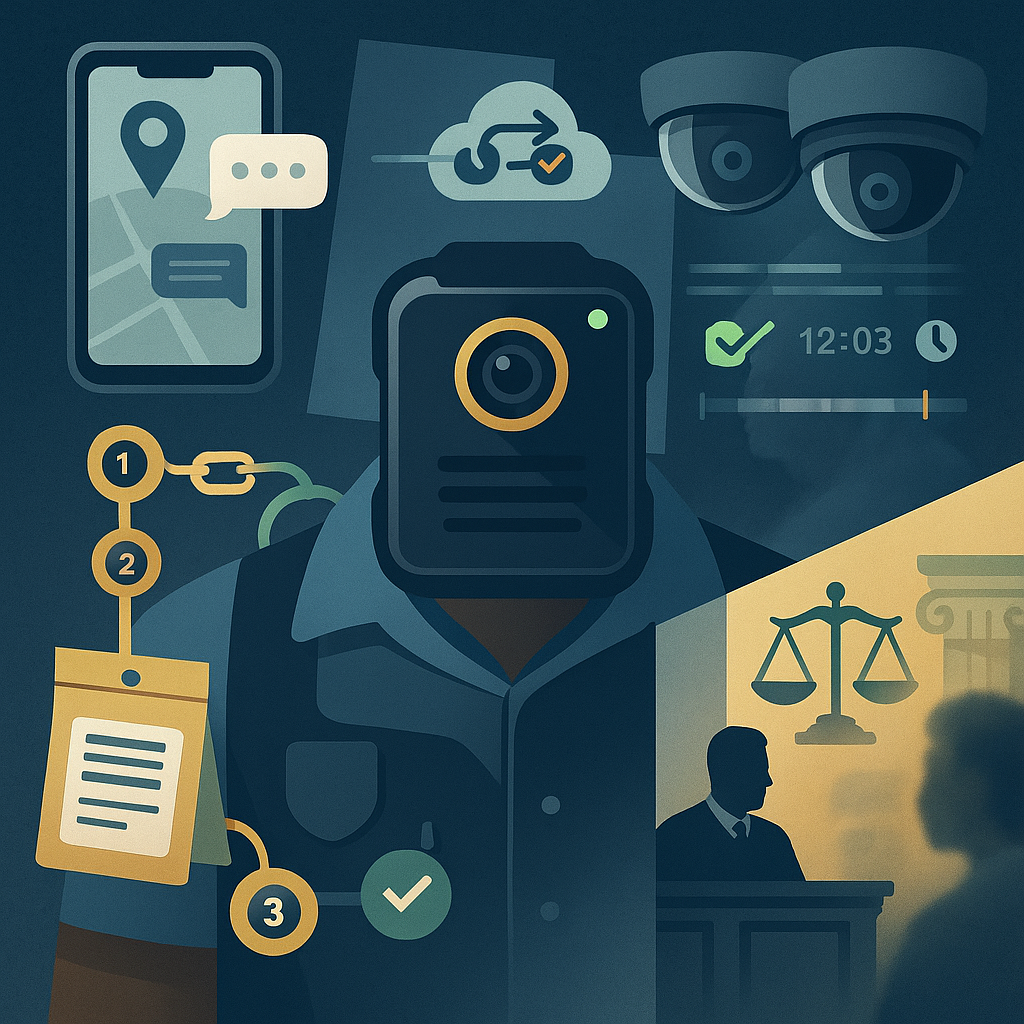Digital Evidence and Body-Cam Footage in Utah Criminal Cases
How Utah courts treat body-cam and other tech evidence from collection to admissibility
When Utah police arrive on scene, their body cameras capture everything from first contact to final arrest. These recordings, along with phone data, emails, and surveillance video, now shape the outcome of many criminal cases in Utah. But not all digital evidence is treated equally. Admissibility depends on strict rules governing how data is collected, stored, and presented in court.
This explainer from Utah Law Explained breaks down how Utah’s justice system authenticates body-cam and digital footage, who can challenge it, and what rights defendants have when that footage becomes a key piece of evidence.
Understanding Digital Evidence in Utah
Digital evidence refers to any electronic record that helps prove or disprove facts in a case. This can include:
- Police body-cam recordings
- Cell phone or GPS data
- Surveillance footage
- Social media messages or photos
- Emails and text logs
Utah courts follow both state and federal evidence rules to decide whether this material can be introduced at trial. Judges examine not only what the evidence shows, but how it was obtained. If a defendant’s Fourth Amendment rights were violated, for example by an unlawful search or seizure, the evidence may be excluded.
Chain of Custody and Authentication
For body-cam or digital footage to hold up in Utah court, the prosecution must establish a clear chain of custody. This means every person who handled the evidence, from the officer to the lab tech, must be identified and documented.
Authentication is equally critical. Prosecutors must show the recording is what it purports to be and that it has not been altered or tampered with. Even small discrepancies in timestamps, metadata, or storage logs can raise doubts about accuracy. Defense attorneys often use these issues to argue for suppression or limited use of the footage.
Privacy and Public Access Rules
Body-cam videos often raise privacy questions. Utah’s Government Records Access and Management Act (GRAMA) controls when footage can be released to the public. While many recordings are considered public records, sensitive content such as footage from inside a home, hospital, or involving minors can be withheld or redacted.
For defense teams, obtaining relevant footage quickly can be critical. Utah police departments typically retain body-cam data for a set period, but delays or technical issues can complicate access. Knowing how to properly request and preserve this evidence is essential.
Editing, Redaction, and Evidentiary Challenges
Before trial, body-cam footage may be edited or redacted to remove private information or irrelevant sections. Utah courts require that any changes be clearly documented to maintain credibility.
Defense attorneys often challenge partial edits or missing segments by arguing that they distort context or omit exculpatory details. In many cases, judges will review the full unredacted version privately to decide what jurors can see. Digital evidence from phones or computers faces similar scrutiny. Screenshots or clips without verifiable metadata may be rejected as unreliable.
Defense Strategies in Digital Evidence Cases
When digital evidence plays a central role, the defense should emphasize technical accuracy and procedural fairness. Common approaches include:
- Questioning the chain of custody for any missing or altered data
- Filing motions to suppress unlawfully obtained recordings
- Calling expert witnesses to analyze digital authenticity
- Arguing that edits or redactions create misleading impressions
By carefully dissecting the source and integrity of digital proof, defense lawyers can uncover weaknesses that may shift the case’s direction.
Real-World Scenarios and Utah Examples
Recent Utah matters highlight both the power and pitfalls of digital evidence. Body-cam footage has cleared officers in justified shootings, and it has also led to new charges when recordings contradicted official reports.
For defendants, cell phone and social media data have been pivotal, sometimes exonerating individuals or revealing inconsistencies in witness statements. Each case turns on how well the evidence is documented and how faithfully it reflects real events.
YouTube and Instagram: Body-Cam Evidence in Action
YouTube
Why This Matters in Utah Courts
Digital evidence and body-cam footage offer transparency and often the clearest version of events, but reliability depends on careful handling, legal precision, and fair interpretation. Understanding these principles helps Utah residents, defendants, and law enforcement navigate the realities of modern courtroom practice.
Talk to a Utah AttorneyAt Utah Law Explained, our goal is to make complex Utah laws understandable and actionable. Whether you are facing charges or want to know your rights in an age of constant recording, knowledge is your strongest defense.
